What Will You Learn
- Network Security Fundamentals:
- Fundamentals of network security
- Network security protocols that govern the flow of data
- Identification, Authentication, and Authorization:
- Access control principles, terminologies, and models
- Identity and access management (IAM)
- Network Security Controls: Administrative Controls
- Regulatory frameworks, laws, and acts
- Security policies, and how to conduct security and awareness training
- Network Security Controls: Physical Controls
- Importance of physical security and physical security controls
- Physical security policies and procedures
- Best practices to strengthen workplace security
- Environmental controls
- Network Security Controls: Technical Controls
- Types of bastion hosts and their role in network security
- IDS/IPS types and their role in network defense
- Types of honeypots and virtual private networks (VPNs)
- Security incident and event management (SIEM)
- Virtualization and Cloud Computing
- Key concepts of virtualization and OS virtualization security
- Cloud computing fundamentals and cloud deployment models
- Cloud security best practices
- Wireless Network Security
- Fundamentals of wireless networks and encryption mechanisms
- Wireless network authentication methods
- Implementing wireless network security measures
- Mobile Device Security
- Mobile device connection methods and management
- Mobile use approaches in enterprises
- Security risks and guidelines associated with enterprise mobile usage policies
- Implement various enterprise-level mobile security management solutions
- Best practices on mobile platforms
- IoT Device Security
- IoT devices, application areas, and communication models
- How security works in IoT-enabled environments
- Cryptography and PKI
- Cryptographic tools, security techniques, and algorithms
- Public key infrastructure (PKI) to authenticate users and devices in the digital world
- Data Security
- Data security and its importance
- Security controls for data encryption
- Perform data backup and retention
- Implement data loss prevention concepts
- Network Traffic Monitoring
- Network traffic monitoring concepts.
- Traffic signatures for normal and suspicious network traffic.
- Perform network monitoring to detect suspicious traffic
- Information Security Fundamentals
- Information security fundamentals
- Information security laws and regulations
- Information Security Fundamentals
- Information security fundamentals
- Information security laws and regulations
- Ethical Hacking Fundamentals
- Cyber Kill Chain methodology
- Hacking concepts, hacking cycle, and different hacker classes
- Ethical hacking concepts, scope, and limitations
- Information Security Threats and Vulnerabilities
- Detect various threat sources and vulnerabilities in a network or system
- Different types of malwares
- Password Cracking Techniques and Countermeasures
- Types of password cracking techniques
- Social Engineering Techniques and Countermeasures
- Social engineering concepts and techniques
- Insider threats and identity theft concepts
- Network-Level Attacks and Countermeasures
- Packet sniffing concepts and types
- Sniffing techniques and countermeasures
- DoS and DDoS attacks under sniffing attacks
- Web Application Attacks and Countermeasures
- Web Server Attacks
- Web Application Attacks
- Web Application Architecture and Vulnerability Stack Web Application Threats and Attacks
- SQL Injection Attacks
- Types of SQL Injection Attacks
- Wireless Attacks and Countermeasures
- Wireless Terminology
- Types of Wireless Encryption
- Wireless Network-specific Attack Techniques Bluetooth Attacks
- Wireless Attack Countermeasures
- Mobile Attacks and Countermeasures
- Mobile Attack Anatomy
- Mobile Attack Vectors and Mobile Platform Vulnerabilities
- IoT and OT Attacks and Countermeasures
- IoT Attacks
- IoT Devices, their need and Application Areas
- IoT Threats and Attacks
- OT Attacks
- Understand OT Concepts
- OT Challenges and Attacks
- OT Attacks Countermeasures
- IoT Attacks
- Cloud Computing Threats and Countermeasures
- Cloud Computing Concepts
- Container Technology
- Cloud Computing Threats
- Cloud Computing Countermeasures
- Penetration Testing Fundamentals
- Fundamentals of Penetration Testing and its Benefits
- Various Types and Phases of Penetration Testing
- Guidelines and Recommendations for Penetration Testing
- Computer Forensics Fundamentals
- Fundamentals of computer forensics and digital evidence
- Objectives of forensic readiness to reduce the cost of investigation
- Roles and responsibilities of a forensic investigator.
- Legal compliance in computer forensics
- Computer Forensics Investigation Process
- Forensic investigation process and its importance
- Forensic investigation phases
- Understanding Hard Disks and File Systems
- Types of disk drives and their characteristics
- Booting process of Windows, Linux, and Mac operating systems
- Examine file system records during an investigation
- Data Acquisition and Duplication
- Data acquisition fundamentals, methodologies, and their different types
- Determine the data acquisition format
- Defeating Anti-forensics Techniques
- Anti-forensics techniques and their countermeasures
- Windows Forensics
- How to gather volatile and non-volatile information
- Perform Windows memory and registry analysis
- Analyze the cache, cookie, and history recorded in web browsers
- Examine Windows files and metadata
- Linux and Mac Forensics
- Volatile and non-volatile data in Linux
- Analyze filesystem images using the sleuth kit
- Demonstrate memory forensics
- Mac forensics concepts
- Network Forensics
- Network forensics fundamentals
- Event correlation concepts and types
- Identify indicators of compromise (IoCs) from network logs
- Investigate network traffic for suspicious activity
- Investigating Web Attacks
- Web application forensics and web attacks
- Understand IIS and Apache web server logs
- Detect and investigate various attacks on web applications
- Dark Web Forensics
- Dark web forensics investigation and how it works.
- Tor browser forensics
- Investigating Email Crime
- Email basics and how it can be used as evidence
- Techniques and steps used in email crime investigation
- Malware Forensics
- Malware, its components, and distribution methods
- Malware forensics fundamentals and types of malware analysis
- Perform static malware analysis and dynamic malware analysis
- Conduct system and network behavior analysis
















